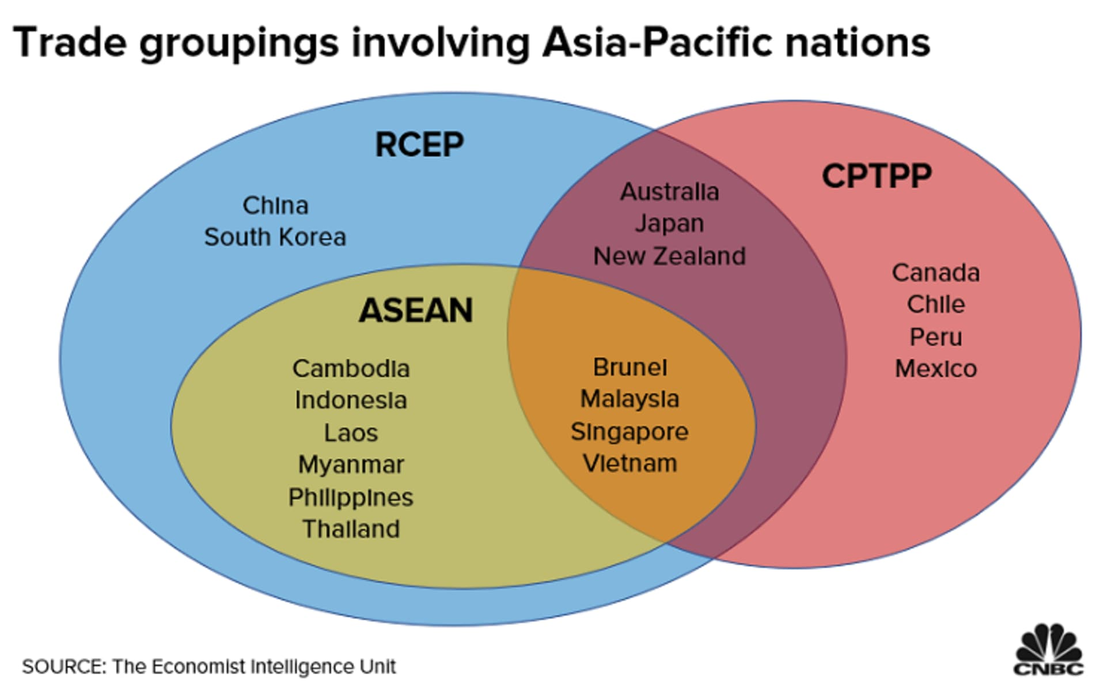RCEP – What is It?
The objective of the plan is to specify a number of rules, procedures, standards, services, and remedies between the member countries by establishing a free trade area that will ‘progressively liberalize and facilitate trade in goods among the parties through progressive elimination of tariff and non-tariff barriers on substantially all trade goods among the parties,’ by creating a mutually beneficial economic partnership framework. The agreement goes on for many pages, much of which is specifics about things like what constitutes the basis for a product’s origination location, details of payments and transfers, and the redress for subsidies that might create an unbalanced trade situation,
While it is difficult to anticipate what such an agreement could do for the Asian-Pacific economy, a Brooking’s note projected that the agreement could raise global national incomes by an annual $186b in 2030 and raise trade among members by $428b and non-members by $48b, with the greatest benefits likely falling to China, Japan, and South Korea. RCEP overlaps with a number of other Asian-Pacific trade group agreements as shown in Figure 1. We expect it will take quite some time for tariffs and other trade barriers to be reduced to zero, however having a framework and a system for redress will at least give process to a very complex but higher beneficial agreement for the members.


 RSS Feed
RSS Feed